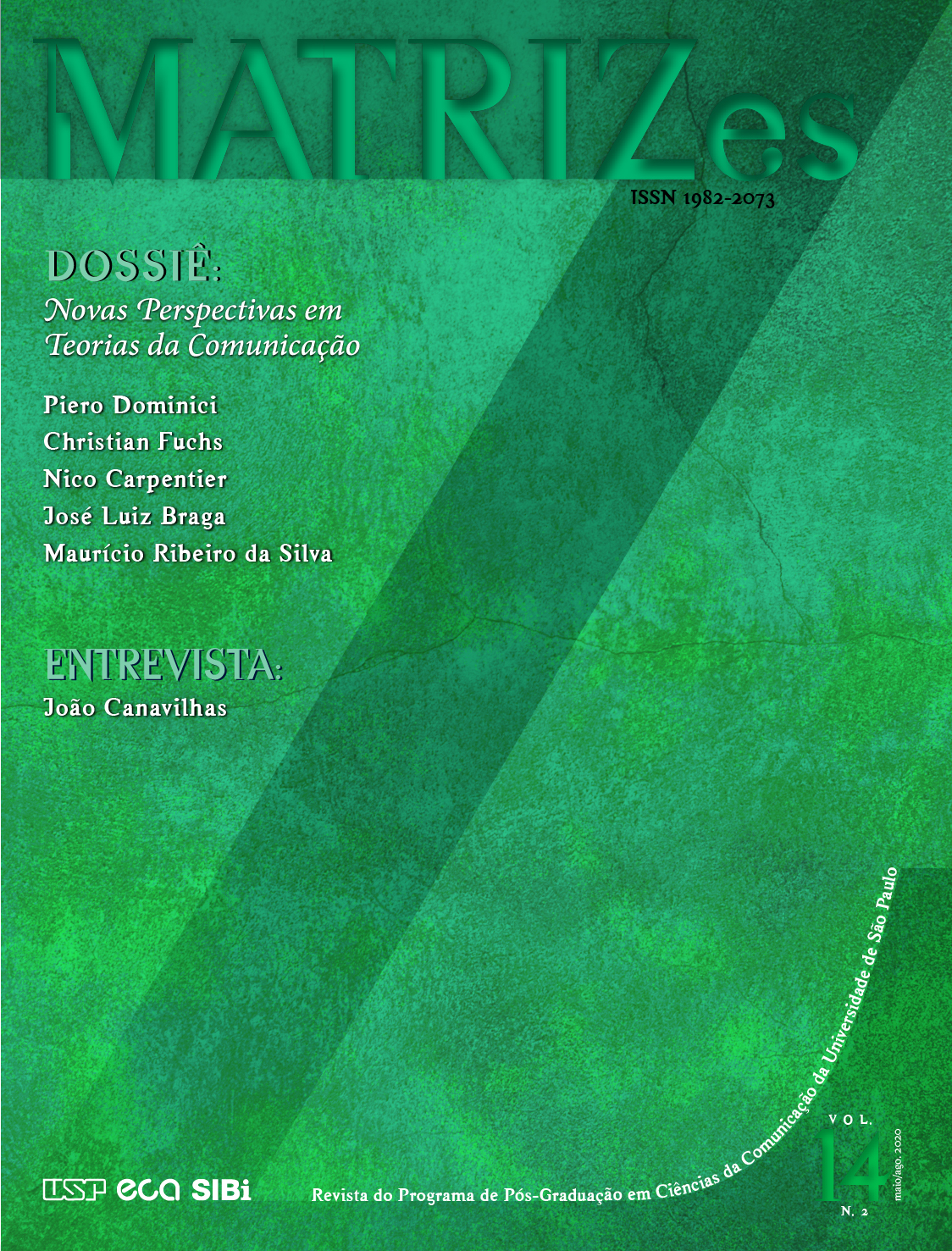Media nature and reading protocols of the digital book
DOI:
https://doi.org/10.11606/issn.1982-8160.v14i2p307-324Keywords:
Digital book, Reading protocols, Reading experienceAbstract
Discusses the implications of the materiality of the application books in the reading experience, recognizing actors that impose an updating of the reading protocols proposed by Chartier.Starting from the discussion of the ontological nature of the digital book, the article advances by presenting the protocols of the system, in the read and in the space.Conceptual operators of the book literature are articulated with the notions about the reading protocols and the computational pragmatics of the new media. From a qualitative-exploratory approach, the results that indicate the ontology of the media as a propeller of protocols that place materiality as the central point of the reader's transformations in digital environment.
Downloads
References
Ascott, R (1997). Cultivando o hipercórtex. In D. Domingues (Org.), A arte no século XXI: A humanização das tecnologias (pp. 336-344). Editora UNESP.
Bogost, I. (2007). Persuasive games: The expressive power of videogames. MIT Press.
Bougnoux, D. (1999). Introdução às ciências da comunicação. Edusc.
Castells, M. (1999). A sociedade em rede. Paz e Terra.
Chartier, R. (2011). Práticas de leitura. Estação Liberdade.
Eco, U. (1994). Seis passeios pelos bosques da ficção. Companhia das Letras.
Eco, U. (2008). Lector in fabula (A. Cancian, trad.) (2ª ed.). Perspectiva.
Instituto Pró-Livro (2016). Pesquisa retratos da leitura do Brasil. Instituto Pró-Livro. http://plataforma.prolivro.org.br/retratos.php
Flexor, C. O. (2018). Da ontologia livresca à experiência da leitura em contexto digital: Entre a consonância e o conflito [Tese de doutorado não publicada]. Universidade Federal de Goiás.
Flusser, V. (2010). A escrita: Há futuro para a escrita? Annablume.
Horne, A. (2016, 5 de julho). Writing in place: An “ambient literature” project in the UK. Publishing Perspectives. https://bit.ly/34FgGWC
Horowitz, E., Derby, M., & Moffett, K. (2014). The silent history: A novel. FSG Originals. https://bit.ly/2YNVPMZ
Lemos, A. (2003). Olhares sobre a cibercultura. Sulina.
Lemos, A. (2010). Jogos móveis locativos: Cibercultura, espaço urbano e mídia locativa. Revista USP, (86), 54-65. https://doi.org/10.11606/issn.2316-9036.v0i86p54-65
Lévy, P. (1999). Cibercultura. Editora 34.
Lima, W. T. (2011). Jornalismo computacional em função da “Era do Big Data”. Revista Líbero, 14(28), 45-52. https://bit.ly/3jpDEoN
Manguel, A. (2010). Uma história da leitura. Companhia das Letras.
Manovich, L. (2002). The language of the new media. MIT Press.
Manovich, L. (2013). Software takes command. Bloomsburry Academic.
Mayer-Schonberger, V., & Cukier, K. (2013). Big data: A revolution that will transform how we live, work and think. John Murray Publisher.
Morin, E. (2005). Introdução ao pensamento complexo. Sulina.
Murray, J. (2003). Hamlet no Holodeck: O futuro da narrativa no ciberespaço. Itaú Cultural; Unesp.
Plaza, J. (2003). Arte e interatividade: autor-obra-recepção. ARS, 1(2), 9-29. https://doi.org/10.1590/S1678-53202003000200002
Quintana, M. (1995). A vaca e o hipogrifo. Globo.
Quintana, M. (2006). Caderno H. Globo.
Rocha, C. (2009). Pontes, janelas e peles: Contexto e perspectivas taxionômicas das interfaces computacionais [Relatório de estágio de pós-doutorado não publicado]. Pontifícia Universidade Católica de São Paulo.
Downloads
Published
Issue
Section
License

This work is licensed under a Creative Commons Attribution-NonCommercial-ShareAlike 4.0 International License.
Authors who publish in this journal agree to the following terms:
- Authors retain the copyright and grant the journal the right to first publication, with the work simultaneously licensed under the Creative Commons Attribution License (CC BY-NC-SA 4.0) which allows sharing of the work with acknowledgment of authorship and initial publication in this journal for non-commercial purposes.
- Authors are authorized to assume additional contracts separately, for non-exclusive distribution of the version of the work published in this journal (eg, publishing in institutional repository or as a book chapter), with acknowledgment of authorship and initial publication in this journal.






















